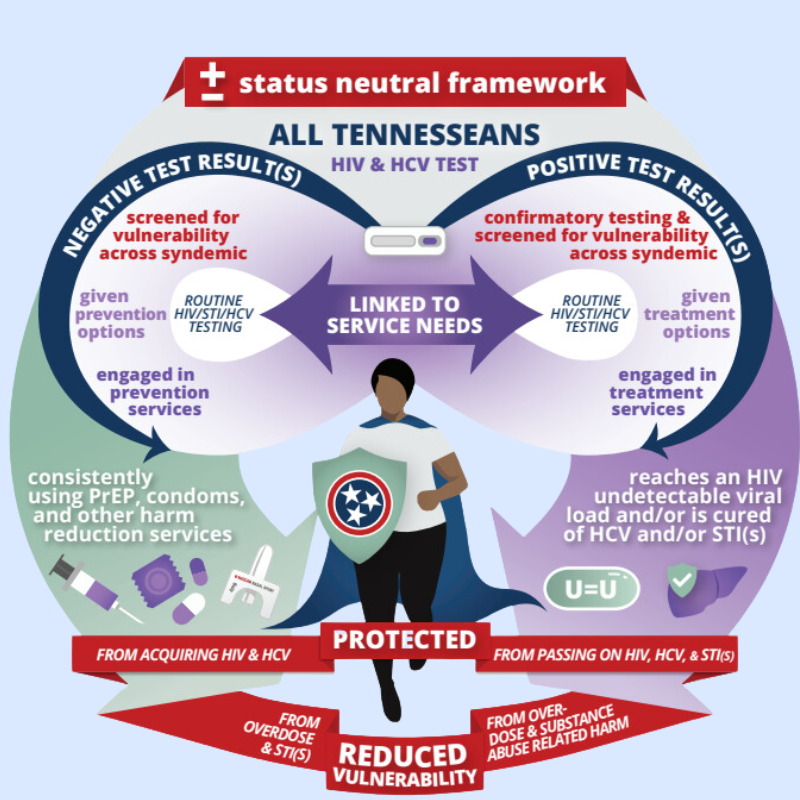The term syndemic comes from two more commonly used words: synergy and epidemic. Synergy refers to an interaction or cooperation that gives rise to a whole greater than the simple sum of its parts. An epidemic is the widespread occurrence of health condition in a community at a particular time. With these meanings combined, a syndemic is two or more epidemics that are connected through behavior, biology, and social factors that results in a enhanced health burden across a population.

To be considered a syndemic three criteria need to be met: (1) Data has to demonstrate separate epidemics are actually occurring; (2) The included health conditions interact through behavior or biology to increase overall health burden; and (3)There must be common social factors contribute to and sustain the epidemics. Using this criteria the health conditions included int End the Syndemic Tennessee are: HIV, sexually transmitted infections (STI), substance use disorder (SUD), and viral hepatitis (VH)
After the HIV and hepatitis C outbreak associated with injection drug use in Scott County, Indiana, the CDC conducted a national analysis to understand what other counties in the United States were vulnerable to this sort of incident. Their assessment identified 220 counties in the U.S. that were most vulnerable, and 41 of those 220 counties are in Tennessee.
When TDH conducted their own vulnerability assessment using more recent data and local indicators they found even more widespread vulnerability. Every single county in Tennessee was vulnerable to this sort of outbreak to some degree. You can learn more about Tennessee assessment by clicking the button to the left.
The vulnerability assessment among epidemiology trends in the state, made it clear that the HIV, sexually transmitted infection, substance use disorder, and viral hepatitis epidemics were intertwined, pushing TDH to take a new approach to strategic planning. This is when the idea of End the Syndemic Tennessee began to really take form. You can explore how we approached this strategic planning process below.


















Important Links
© 2022 End The Syndemic TN. All rights reserved.